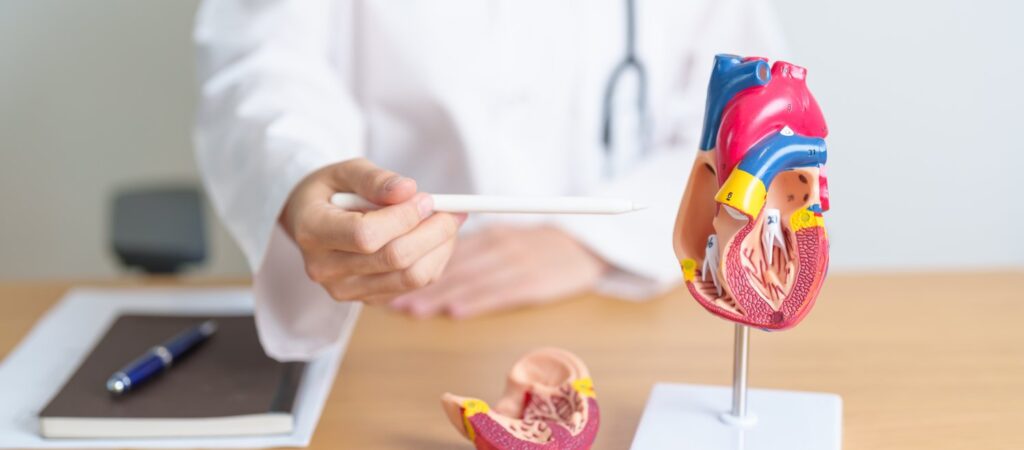The growing incidence of cardiovascular diseases, such as atherosclerosis, has become an urgent concern worldwide. Atherosclerosis, the accumulation of plaque in the arteries, significantly contributes to the narrowing of these vessels, leading to life-threatening conditions such as ischemic heart disease (IHD) and ischemic stroke (IS).
These conditions are responsible for a substantial proportion of the 17.9 million global deaths from cardiovascular diseases annually. The escalating numbers are not only confined to older populations but are also increasingly affecting younger people. This rise can be attributed to modern lifestyle choices that include unhealthy eating habits, insufficient physical activity, smoking, and alcohol consumption. The need for more effective diagnosis and treatment methods for atherosclerosis is, therefore, more pressing than ever.
In a recent article, it was highlighted that cardiovascular diseases (CVDs) are a significant cause of death in many countries, including Singapore, where they accounted for 31% of all fatalities in 2022. Alarming projections suggest that obesity-related heart attacks could triple by 2050, underscoring the need for better prevention, diagnosis, and treatment options.
Imaging techniques commonly used for detecting atherosclerotic plaques include intravascular ultrasound, coronary angiography, computed tomography angiography, and magnetic resonance imaging (MRI). While these methods are valuable, they are not without limitations, particularly when it comes to their invasiveness, resolution, and inability to deliver targeted therapies.
Intravascular ultrasound, for instance, involves the use of an ultrasound probe inserted into the blood vessel via a catheter to provide a detailed image of the artery walls and the plaques within. However, this technique is invasive and is restricted to larger blood vessels, with only moderate spatial resolution.
Coronary angiography, another common method, uses X-ray imaging combined with a contrast dye to detect blockages in the arteries caused by plaque, but like intravascular ultrasound, it is invasive. Computed tomography angiography operates on a similar principle but employs ionising radiation and contrast dye to obtain more detailed images.
Lastly, MRI, although capable of producing the highest resolution images of blood vessels and plaque morphology, remains limited by high costs and accessibility issues. While these methods help in identifying atherosclerotic plaques, none provide a means to deliver targeted therapy, making them inadequate for holistic management of the disease.
Currently, there are no medications or treatments that directly target atherosclerotic plaques to significantly reduce plaque burden or reverse the disease. Patients at high risk of CVD are typically prescribed a range of medications to stabilise plaques, such as statins to lower cholesterol levels, anti-platelet agents like aspirin to prevent clots, and blood pressure management drugs like ACE inhibitors and beta-blockers. Although these medications can reduce the risk of heart attacks and strokes, they do not address the core issue of plaque build-up itself.
However, promising advancements are on the horizon. A team from NUS Yong Loo Lin School of Medicine (NUS Medicine) has made significant progress in developing a nanoparticle technology that offers a new approach to diagnosing and treating atherosclerosis. This innovative technique, known as a theranostic approach, integrates both diagnosis and therapy into a single non-invasive system, presenting a considerable leap forward in cardiovascular medicine. Their findings were published in the journal Small, and the potential of this technology could pave the way for revolutionary changes in how atherosclerosis is managed.
Led by Assistant Professor Wang Jiong-Wei from the Department of Surgery, Nanomedicine Translational Research Programme at NUS Medicine, the research was a collaborative effort involving several experts. The team included Associate Professor James Kah from the Department of Biomedical Engineering, Professor Liu Bin from the Department of Chemical and Biomolecular Engineering at NUS, and Professor Liu Xiaogang from the Department of Chemistry at the NUS Faculty of Science. Together, they developed a nanoparticle capable of overcoming existing challenges in diagnosing and treating atherosclerosis.
The nanoparticle consists of nanoscale coordination polymers (NCP) combined with a pH-responsive linker. This allows the nanoparticles to break down in the acidic environment typically found within atherosclerotic plaques. Once in this environment, the nanoparticles release gadolinium, a contrast agent used in MRI scans, enabling real-time imaging of plaque severity.
Simultaneously, the nanoparticles deliver Simvastatin, a water-insoluble drug with anti-inflammatory and anti-ROS (reactive oxygen species) properties, directly to the plaque. This targeted delivery stabilises the plaque and reduces the risk of cardiovascular events. The use of nanoparticles enhances the effectiveness of the treatment by delivering 1000 times more Simvastatin to the plaques compared to traditional systemic delivery methods, thus reducing potential side effects and increasing therapeutic efficacy.
“Overall, our nanoparticles offer a promising novel approach to non-invasive diagnosis, monitoring and targeted treatment of atherosclerosis, a significant advancement that could pave the way for a new era of cardiovascular care,” said Assistant Professor Wang, the Principal Investigator of the Nanomedicine Translational Research Programme at NUS Medicine.
This proof-of-concept study demonstrates the enormous potential of this nanoparticle-based technology. The research team is now working to further validate their findings with the aim of advancing to clinical trials. Should this technology be successfully translated into clinical use, it could revolutionise how atherosclerosis is diagnosed and treated, potentially saving millions of lives worldwide.
Author:
Alex Carter
Content Producer and Writer


